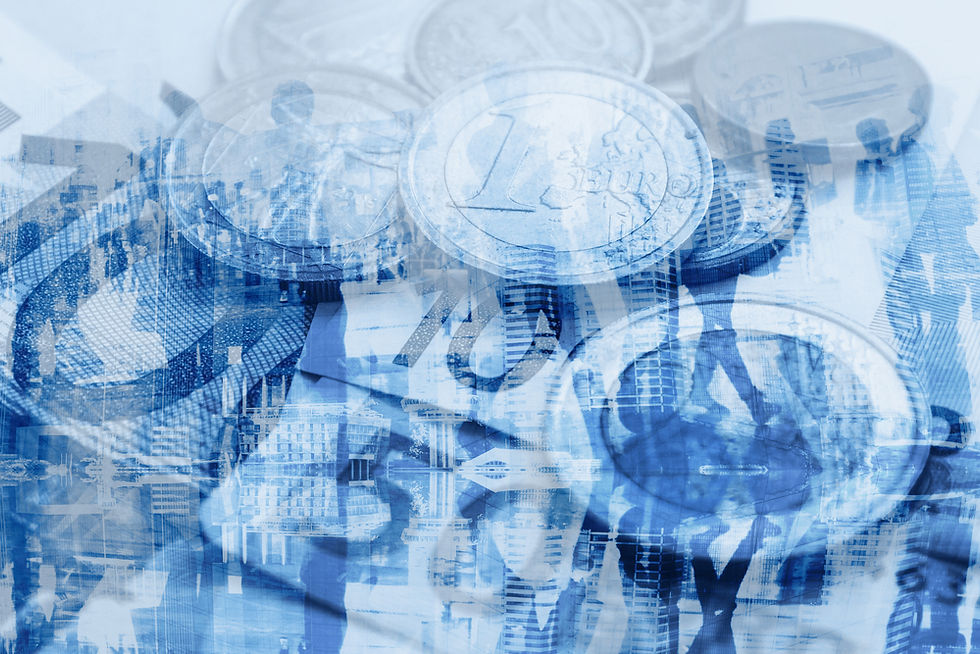The Power of Purchasing Power
- NYee
- Apr 23, 2021
- 3 min read

Inflation has been in the news quite a bit this year. Just last week the March figures for the Consumer Price Index (CPI) came in at 2.6% year-over-year for all items, and 1.6% for all items excluding the more volatile food and energy components. These numbers will likely be higher as the year goes on due to the weakness in prices a year ago owing to the pandemic.
Let's set aside for a moment questions about whether the CPI is the best measure of inflation, whether changes to these statistical measures over the last few decades accurately reflect what's happening to prices across the economy, and whether or not these methodologies would actually really reflect periods of sustained higher prices. Those are all complicated topics in their own right.
When the inflation(!) word gets thrown around - and yes, it usually comes with a healthy side of (!) - we usually think of something being in short supply, and if demand doesn't change then the price of the item goes up. That's one type of inflation. And it's relevant today. But maybe it's not the type of inflation that should be of greatest concern. We forget that money can decline in value - that's another type of inflation. Here's what I shared with clients recently:
"At this point we need to check ourselves when using the word “inflation.” I’ll let one of our investment managers explain:
“Inflation is a dangerously misunderstood term. For Americans it tends to conjure memories of grocery prices rising by the month in the 1970s. That’s a natural reference to a prior pattern – one that feels like a cost-push pattern, as when the price of a commodity like oil or wheat suddenly rises. It would not be the reference point for someone who spent a lifetime in Italy or Greece or Venezuela or scores of other countries. Through repeated experience they understand that their money’s purchasing power can be destroyed by its dilution or debasement – and that this is measured relative to other countries’ currencies. They know that if they have 1,000 Bolivars in the bank and that the government is printing up 100% more money this year, then their 1,000-Bolivar share of the total money in that country is going to shrink by 50%, that their money will lose 50% of its purchasing power. That they’ll need twice as much to buy the same liter of milk.
Importantly, they understand that the milk itself didn’t go up in price, but that their money went down in value. It’s why they know that to save their purchasing power, they have to exchange some of their debasing currency, whenever they have extra in hand, for a stronger one, like the U.S. dollar. A year later, their dollars might be worth twice as much if measured in their local currency.
As Americans, we have no domestic frame of reference for that.”1
There are two potential future sources of higher prices in the economy: one is associated with commodity prices, due to massive underinvestment in exploration and production over the last 7-8 years and the rapidly growing need for various metals and elements to supply our modern green and tech-focused economy. That’s the “cost-push pattern” noted above. The other potential source of higher prices is the simple fact that the only way for governments to deal with their enormous – and growing – debt loads is to debase their currencies. That’s the “purchasing power can be destroyed” pattern described above. It is this second version of inflation - a slow-burning dose of more money circulating coupled with some form of interest rate control – that most worries me.
There are very good reasons why sustained higher inflation may not take hold. I noted some of them in this post last summer. But the purchasing power of cash is going to erode over the next decade - will it lose 20% of its value (about 2% inflation over a decade)? 30%? More? I don't know. But I do know that loss of purchasing power remains a key risk to manage.



Comments